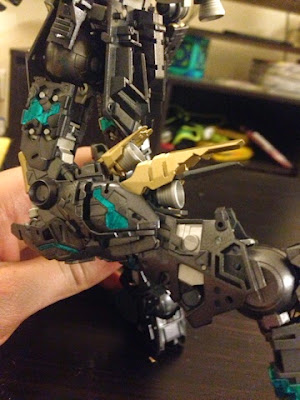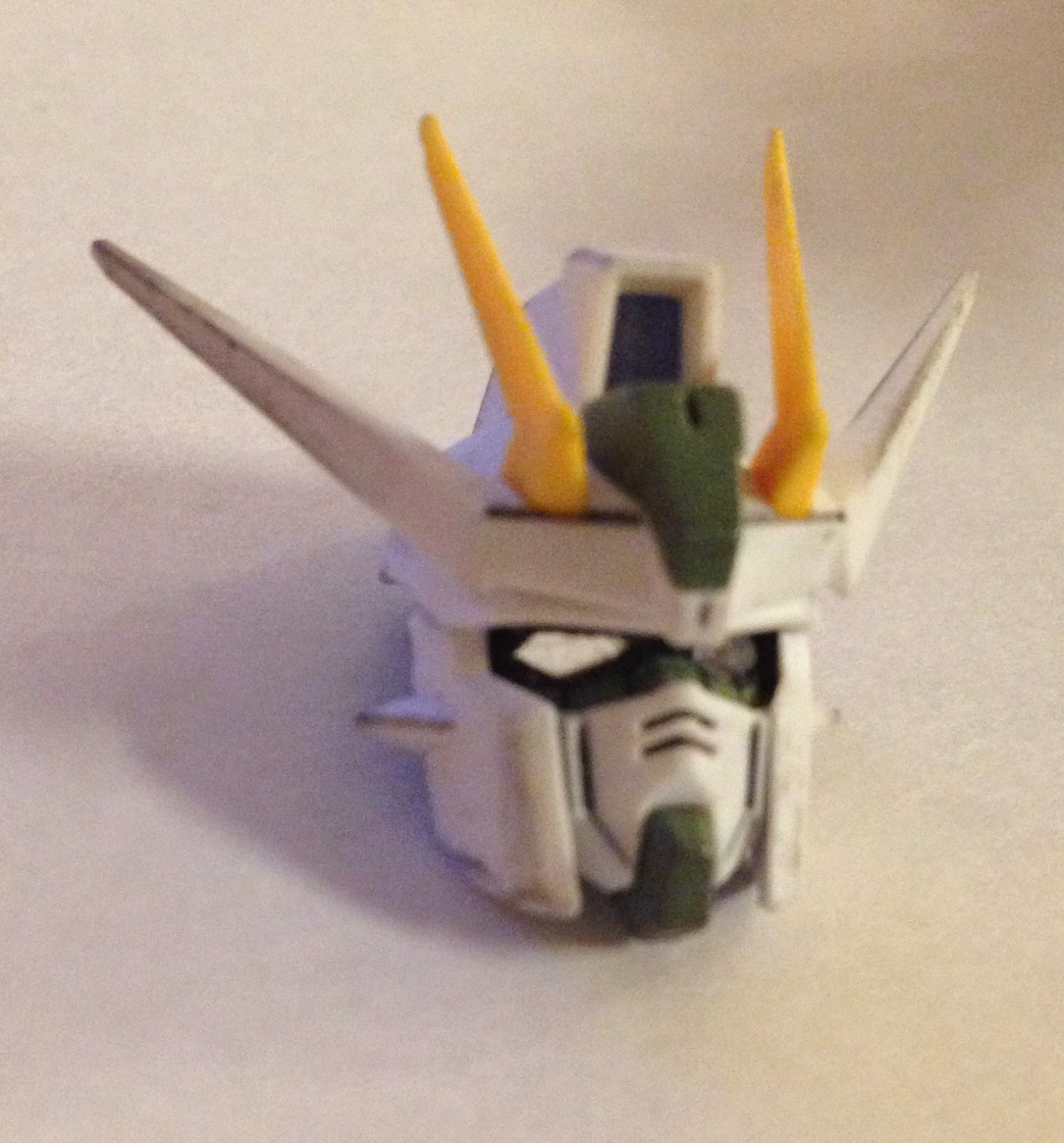Anyway, I figured now would be as good a time as any to show how I do waterslides.
SETUP
A few things you'll need before you get started:
1. Decal setting solution: This is what I use, but I've read that you can just use watered down vinegar. Based on the smell, I believe it.
2. Decal softening solution: I use this one.
(and a small brush to use with each)
3. Hobby knife
4. Tweezers
4. Cutting mat
5. Dish of water
I've found it much easier to deal with the sheet of decals when they're taped down to the cutting board. That way it's not sliding around everywhere while you're trying to cut them out.
... EVERYTHING ELSE
It's pretty straightforward:
First cut the decal you want to apply out from the sheet and toss it in the water to soak. The amount of time will vary (so I've been told) based on your decals, but it seems like ~10 - 15 seconds does the trick for me.
While it's soaking, this is when I like to brush the setter onto the plastic where the decal will eventually sit.
Retrieve your wet decal from the water with your tweezers. Now this part can be pretty tricky. You need to hold onto the paper - only the paper - and then slide the actual marking off of it and onto your plastic. You can then fine tune the location while everything is still wet, then GENTLY dab with paper towel to pick up the excess.
During that last step, I often feel like I need a third hand, so I've found an easier way to make the transition: After soaking, just grab the decal off of the paper with the tweezers and then place it like a tiny sticker.
I've never seen it written to do this way in the many tutorials I've read, however I've not had any issues with it. I will admit, if you're not a little careful, I can see how this could damage the decal you're trying to apply. I'm going to keep doing it my lazy way though. It's seriously so much easier than trying to slide it off of the paper and onto the plastic.
Once it's in place, you need to let it dry for a while. What I do is I'll go through and place a bunch of decals at a time, and as one is drying, move on to the next. After I've done several, I'll come back and apply the softening solution. Just brush it on (carefully!!) and then let it dry again. This step is optional (if you ask me, anyway). It's most important to use the softening when the decal is being applied to an irregular surface, giving it a 'painted on' sort of look. Even on flat surfaces, it helps to hide the edge of the decal, but if you don't feel like doing that then more power to you.
Once it's in place, you need to let it dry for a while. What I do is I'll go through and place a bunch of decals at a time, and as one is drying, move on to the next. After I've done several, I'll come back and apply the softening solution. Just brush it on (carefully!!) and then let it dry again. This step is optional (if you ask me, anyway). It's most important to use the softening when the decal is being applied to an irregular surface, giving it a 'painted on' sort of look. Even on flat surfaces, it helps to hide the edge of the decal, but if you don't feel like doing that then more power to you.




























